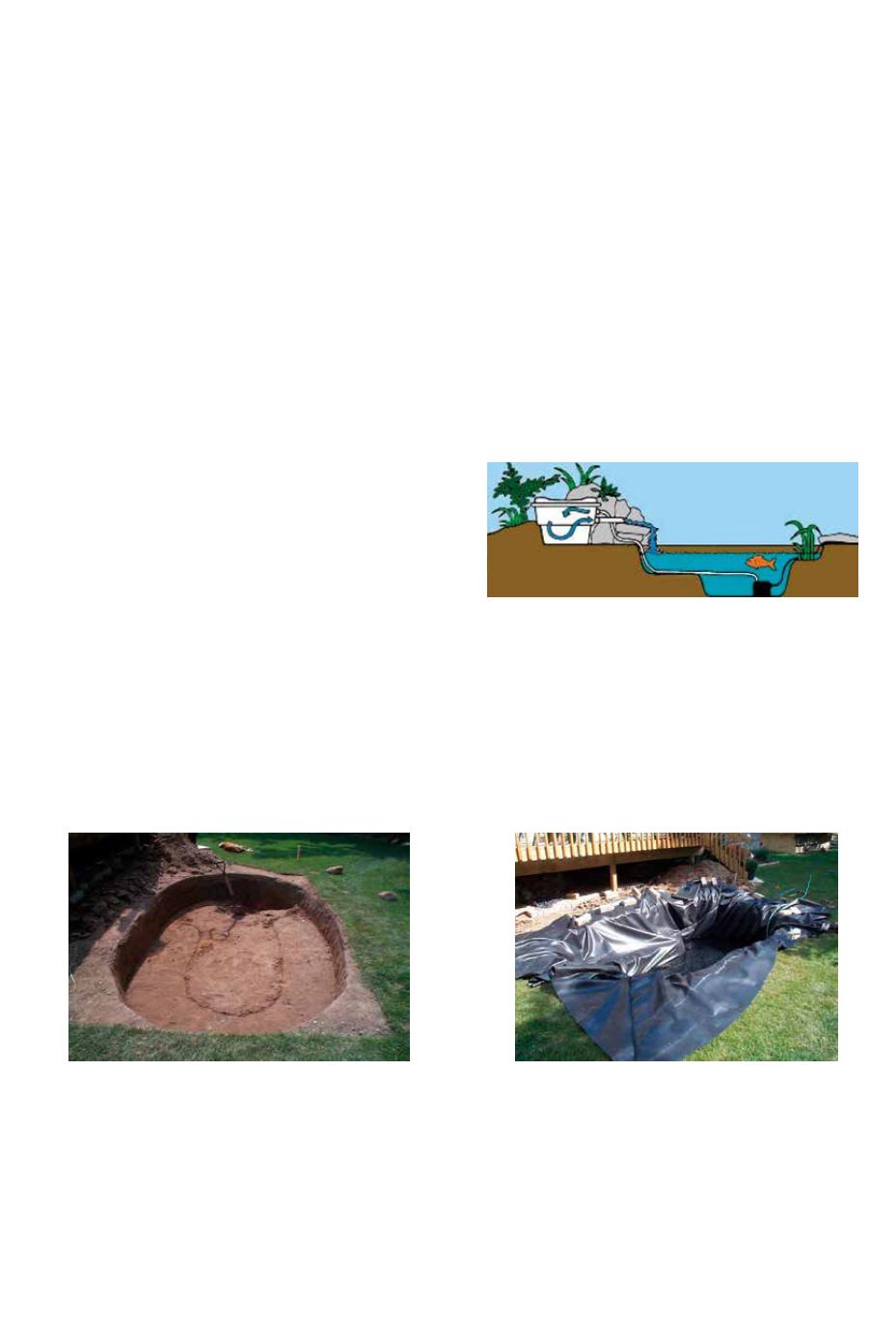
39
Fax: 519-782-3139 or 1-800-728-6324 Email:
Mechanical Filters
Mechanical filters are used in front of or before the pump to prevent floating debris in the water from entering
and clogging the pump and fountainheads. Usually comprised of foam and/or screen, they may sometimes be
found in the first layer of biological filters as well.
It is recommended that all pumps be protected by some sort of mechanical filter to prolong their life (See
page 28).
Biological Filtration
Biological filtration is a proven method for maintaining good water quality for fish and plants. These filters
include high capacity media providing large surface area for colonies of “good” bacteria to thrive on waste
by-products of fish and plants. Biological filtration does not produce solid waste so little to no maintenance is
required once the filtration begins.
To filter adequately, pumps should recirculate the pond volume through the
biofilter once every two hours
.
NOTE:
A bio-filter is designed for continuous duty. If it is left idle for more than a half-hour, the bacteria will die
and emit toxins back into your pond. The entire process of colonization will have to start over, which could take
several weeks. Bacteria starters may be added to expedite this process (See page 23).
When choosing a biofilter consider the following factors
which require more filtration:
• Koi eat more and produce more waste than Goldfish
• A large fish population will increase waste pollution.
• Shallow ponds will require more filtration.
• Exposure to full sun also encourages algae growth.
Ultraviolet Clarifiers
Green water is caused by the growth of tiny single cells of algae. As water passes through the UV clarifier, the
single celled algae are clumped together. The filter can now remove these larger algae particles. UV Clarifiers
can be added to new or existing filter systems.
Step 1
Try to locate in full sun, away from overhanging
trees. Use a rope or hose to create the desired
outline. A depth of 18" or more is recommended.
Shelves for marginal plants should be approximately
12" wide and 8" deep or more. Slope the sides for
stability. Be sure to level the top edge of the pond
to avoid having exposed liner.
Step 2
A cushion of sand or geotextile felt (see pg 26), may
be used to line the excavation and protect the liner.
Drape the liner loosely and evenly over the pond.
The liner is more flexible on a warm day. Anchor the
liner with small weights. Do not place the weights
near the edge of the pool.
FILTRATION
cont’d
INSTALLING A POND
Installing the Liner
(continued on page 40)


